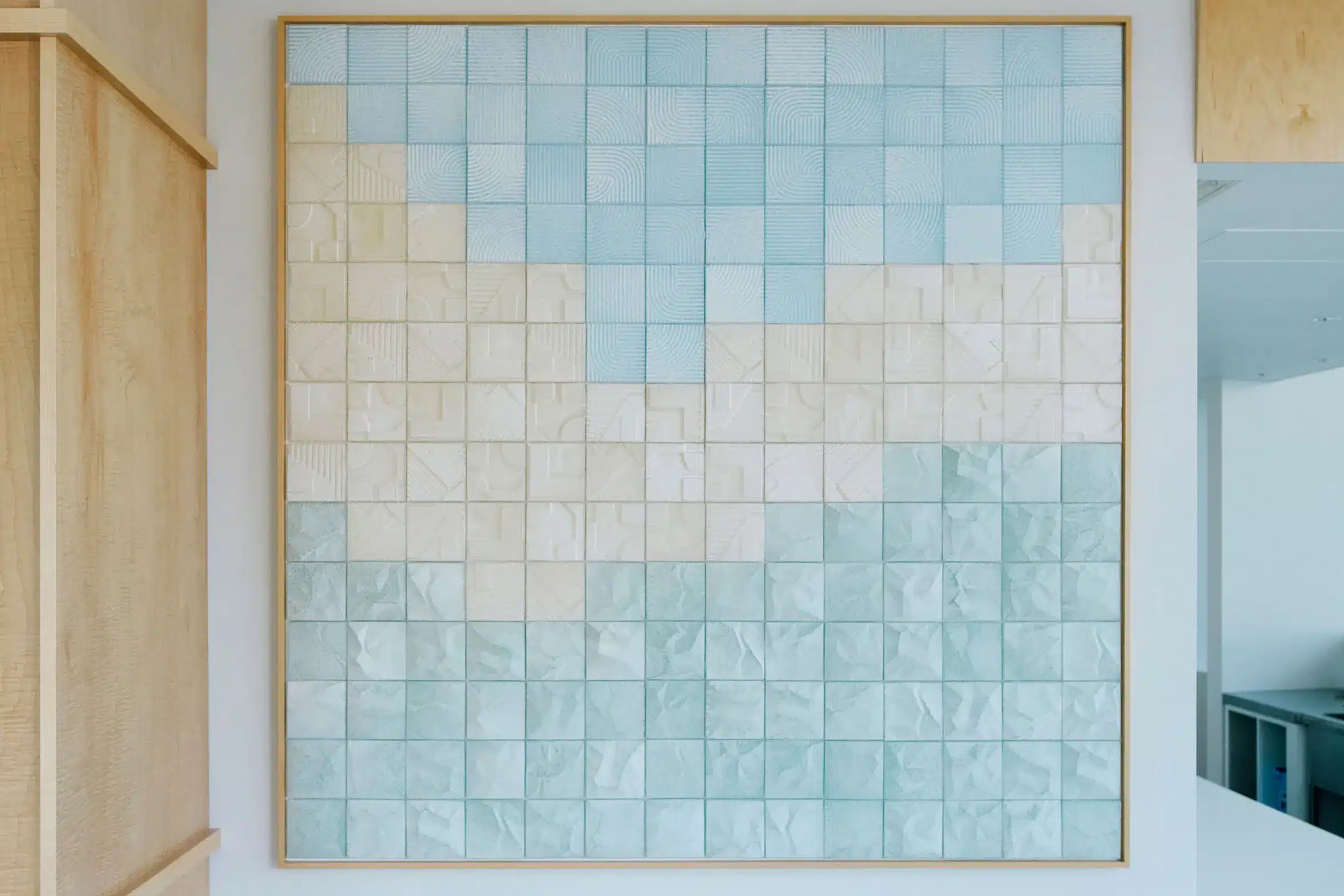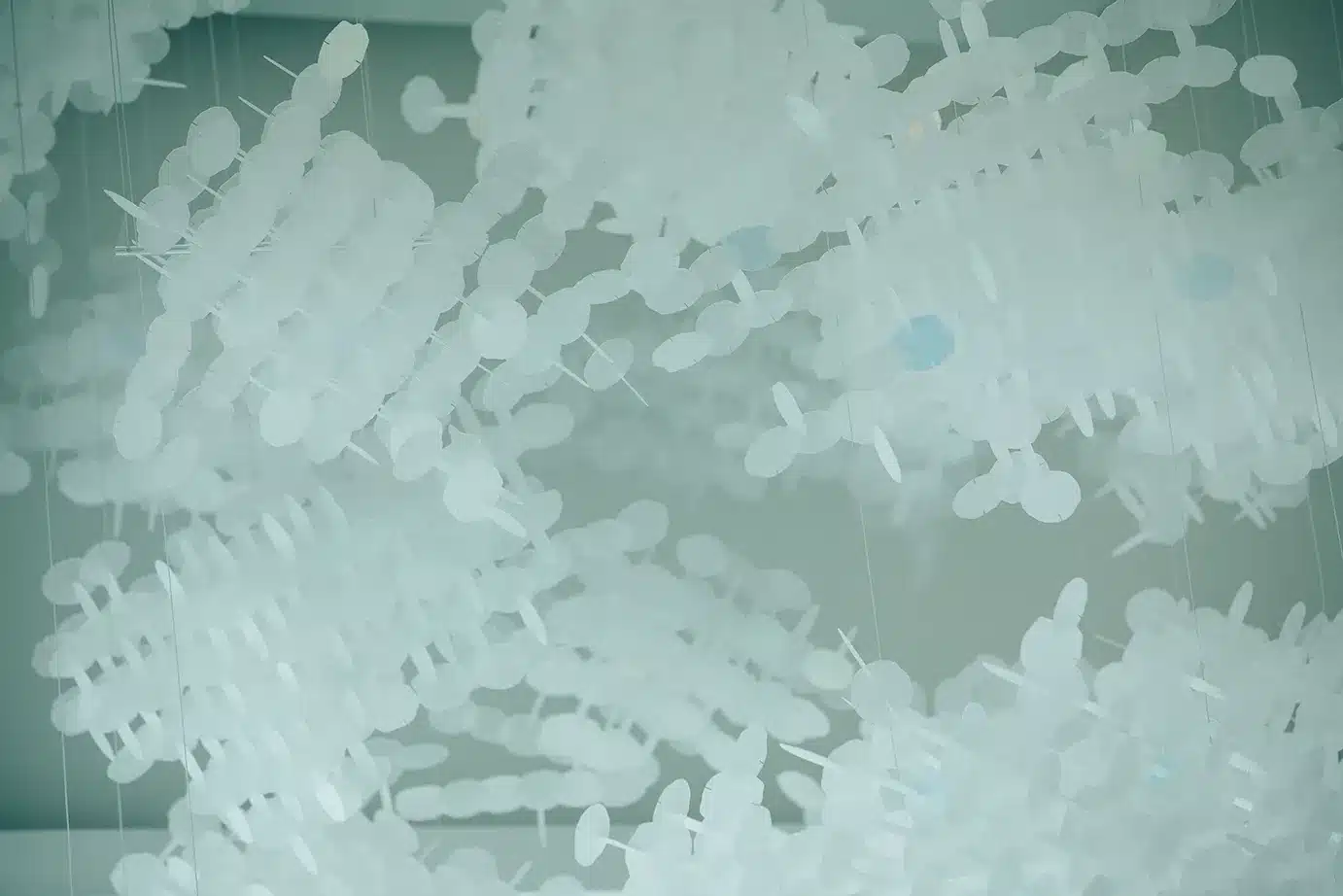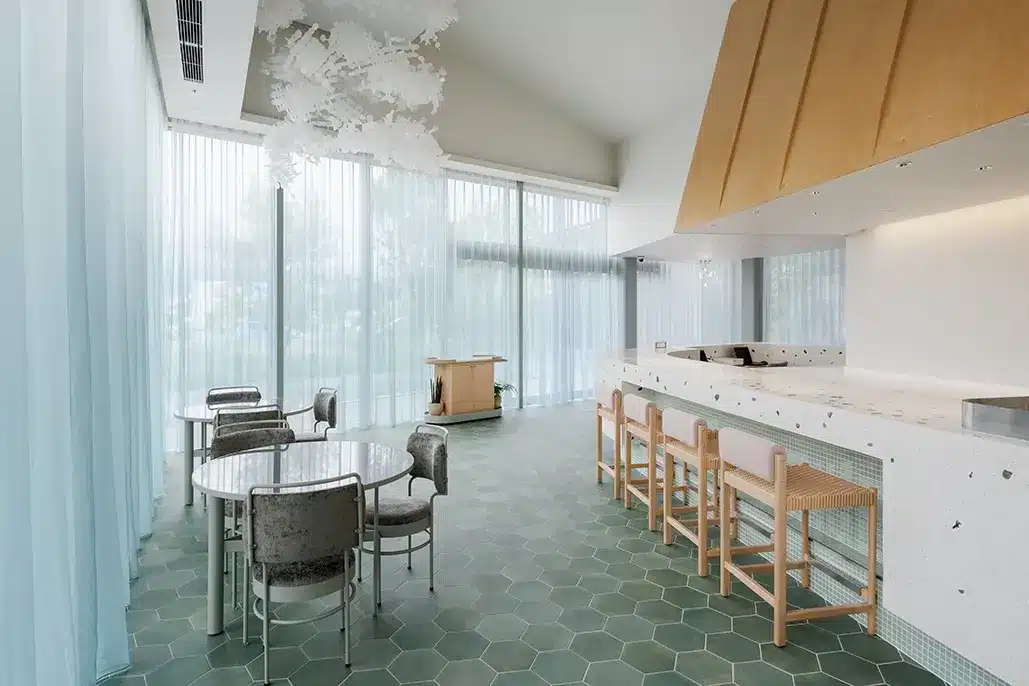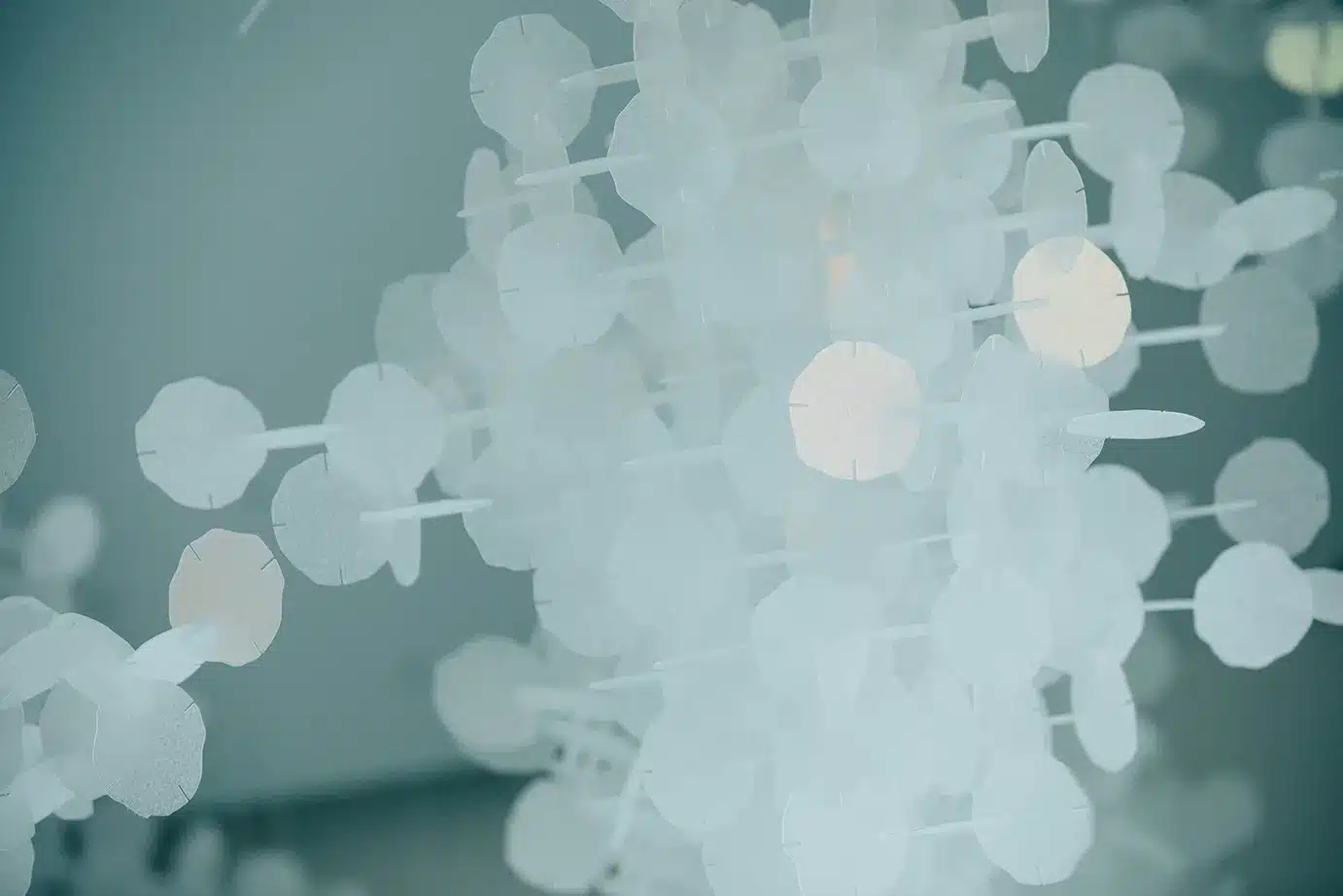© 2023 Requ – Yukari Sato – All Rights Reserved
Direction/Company GOODTIME
3D Modeling, Digital Fabrication/TERADA 3D WORKS
Technical Cooperation/Chairman of Izumi-Kamishihosho Preservation Association, Kunihiko Hirano
Japan’s first “Zero Energy Hotel,” which consumes virtually no electrical energy, ITOMACHI HOTEL 0, opened in Saijo City, Ehime Prefecture on May 27, 2023. The building’s design was undertaken by the Kengo Kuma Architectural Urban Design Office, led by architect Kengo Kuma, and the art creation for key areas within the hotel was entrusted to Rikuh.
Rikuh was responsible for creating art in various locations within the hotel, including counter back art, main art in the café-bar, the 1st and 2nd-floor entrances of the accommodation building, and guest rooms. We established new designs and technology, producing three-dimensional artwork that had never been seen before.
This allows us to reaffirm that water circulates throughout the world, nurturing life within our bodies and all living beings, and to recognize the various ways in which water exists within and around us. We focus on the importance of water in our daily lives, acknowledging how it enriches and sustains the Earth and us (while also considering the potential threats if we mismanage it). Although water is a circulating resource, we also ponder what each of us can do to protect clean water, which is essential for us now and in the future. It is a vital consideration for our future when staying in “Water City Saijo.”
The various forms of water, such as the light snowflakes dancing down from the sky, the soothing sound of continuous raindrops, the soft steam evoking warmth, and the beautiful rainbow in the post-rain sky, all have a profound impact on our hearts when we encounter them. Experiencing such phenomena enriches our lives and can serve as nourishment for the times ahead.
I hope to crystallize the many “rich experiences” I have gained while creating art in a natural environment and share them with the facility’s users. In this project, we took on the challenge of creating three-dimensional shapes and expressions in washi artwork that had never been seen before, respecting the material’s natural colors, and generating depth in the artwork through light and shadow.
・East Building 01: Café Space Suspended Art
We digitized the ripple patterns created by the spring water next to Saijo City Hall and designed multiple patterns based on the water’s gentle, natural shapes. These patterns were then laser-cut to create more than 5,000 pieces. Clear parts with a misty white hue, parts with varying shades, and parts polarized like semiconductor wafers were combined to express rain, rainbows, snow, and more.
The art’s shape was selected from several design options inspired by the molecular structure of water made of hydrogen and oxygen, H2O, that had meaningful shapes as “water” and could also be aesthetically pleasing. The process of transforming these shapes into three-dimensional structures resulted in remarkably sturdy pieces.
The overall image of the three-dimensional structure was created to simulate water rising in a vortex toward the sky, becoming rain or snow, and then cycling back down, symbolizing how water nourishes our lives. This was represented as art.
・East Building 02: Counterback Art Frame
For the reception art, the design was based on Saijo City’s map. Keywords like “Saijo City’s image” and “the circulation of water” were used during the process of distorting the map. The design was then turned into three-dimensional artwork using 3D technology and simulated as a whole. The 3D data was subsequently used in various digital fabrication techniques, including 3D printing and vacuum forming, to create 196 washi tiles.
Saijo City is known for its “sea, village, and mountains.” It features popular mountains for hikers, thriving agriculture, and major corporate factories in the village, leading to the Seto Inland Sea. The art representing Saijo City is divided into areas made with blue tiles symbolizing water, yellow for the town and fields, and green for the mountains.
To facilitate communication with customers, the town area features tiles representing the ITOMACHI HOTEL 0 building, and the mountain area has tiles depicting the summit of Mount Ishizuchi.
・South Building 01: Common Area 1st Floor and 2nd Floor Entrance Wall Art
This artwork represents the water droplets rising from the fountain created by the spring near the South Building entrance. The art takes the form of water bubbles dancing and rising.
The light, round, and paper-textured parts floating in the air create a sense of intimacy and relaxation for customers, especially children. The art aims to help guests feel more at ease in the tranquil environment of ITOMACHI HOTEL 0, offering a respite from their everyday lives.



